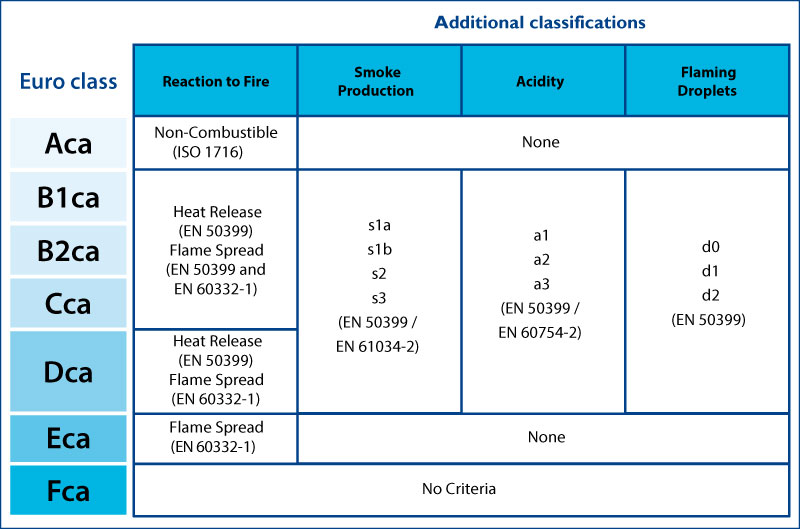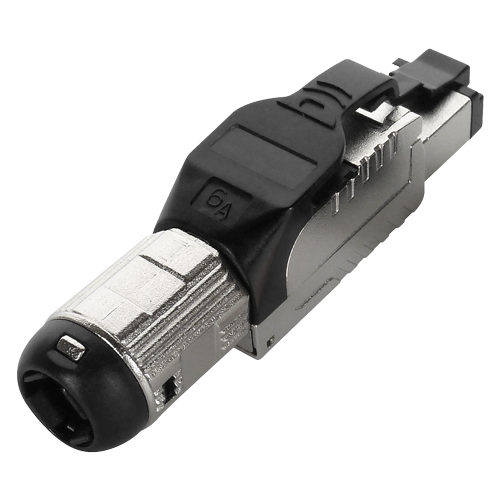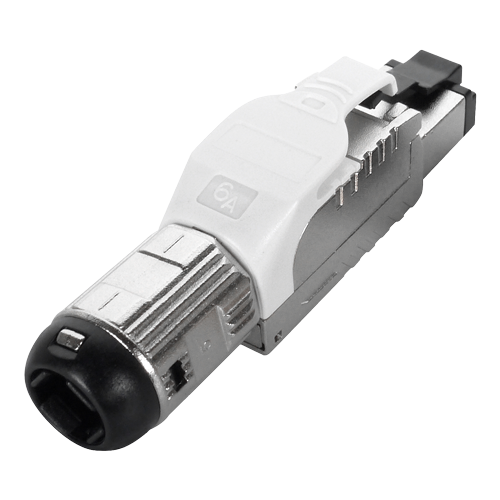Latest News From Cablenet
Stock in the Channel Disty Award - Cablenet awarded Best Niche Supplier
Stock in the Channel Disty Award
Cablenet awarded Best Niche SupplierRead more...1st July 2021
Today, the winners of the first-ever Stock in the Channel Disty Awards are announced, celebrating the suppliers that enable tens of thousands of resellers to do business through the largest stock & price search platform.
Cablenet are delighted to have been awarded the prize for Best Niche Supplier, Stock in the Channel gave the following description:
Awarded to the supplier with the largest range and highest quality product data coverage within one product area. Huge well done to Cablenet for exceptional product data coverage at 99.1% for over 4000 cable SKUs.

The Disty Awards were selected from internally measured features of the Stock in the Channel platform, with the objective of shining a light on all trade distributors, large and small, broadline and niche.
With over 160 UK suppliers connected to Stock in the Channel, the platform offers over 6 million IT products and is used by tens of thousands of resellers every day.
To find out more about the stock & price search engine and a large range of other services offered to MSPS and resellers, head to www.stockinthechannel.co.uk
Construction Product Regulations - EXPLAINED
Construction Product Regulations Explained
It is a set of regulations for construction products that aims to break down technical barriers, provide a common technical language, assess the performance of construction products, and harmonise the rules for marketing these products.
With regards to cable, this means how it can contribute to the spread of a fire.
Read more...The Construction Product Regulations covers all permanently installed cables within a building, including communication, power and control cables in fixed installations. Except for products such as patch leads, display leads and power leads.
Euroclass - What does it mean?Within the Construction Product Regulations, there are several classes denoting the level of fire safety of the cable, known as Euroclass. It is named in this way because the regulations originated in the EU.
The classes are Aca, B1ca, B2ca, Cca, Dca, Eca, and Fca.
Some additional criteria
- Smoke production (s1a, s1b, s2, s3)
- Acidity (a1, a2, a3)
- Flaming droplets (d0, d1, d2)
You may see a cable listed as B2ca s1a d1 a1, this suggests that the B2ca cable has a minimal contribution to fire, s1a means that it has little smoke production, d1 means that it has no flaming droplets that last for more than 10 seconds and finally, a1 means less emission of acid.
Which class should you choose?
The class that you use for a project will depend hugely on where the cable is installed. For example, for hospital wards, children’s nurseries, airports, railways etc., a minimum of B2ca should be used because the contribution to fire from B2ca cable is very low.
On the other hand, the slightly cheaper Cca (the minimum standard in the UK) could be installed in a commercial building, such as an office or warehouse.
B2ca Cable 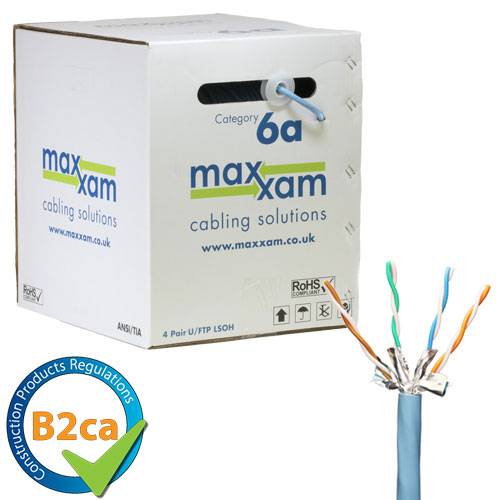
XX6A0004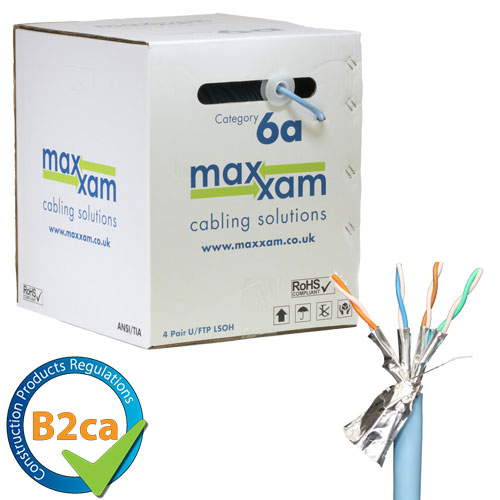
XX6A0009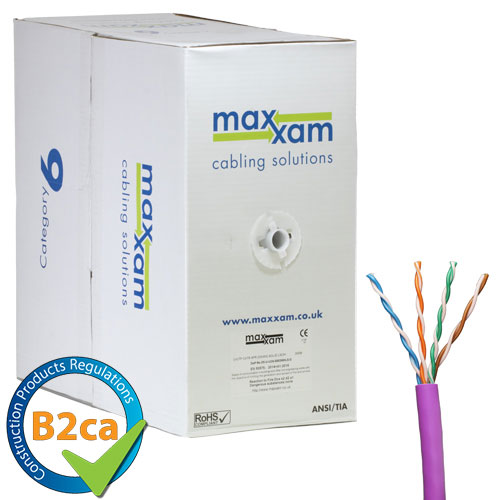
XX60004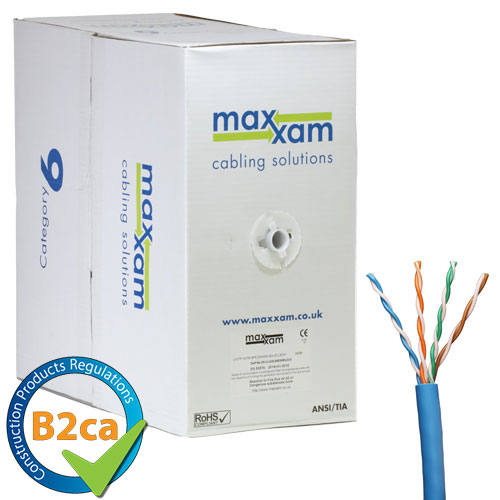
XX60004B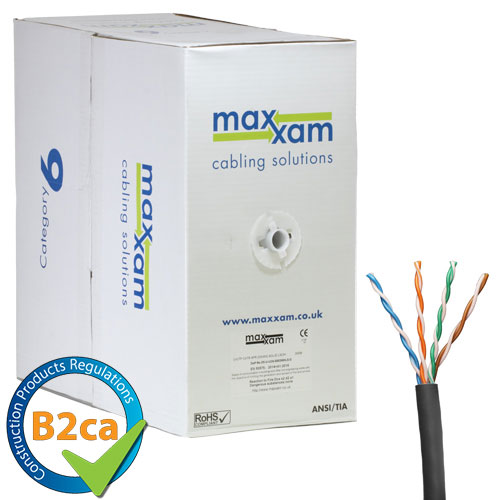
XX60004BK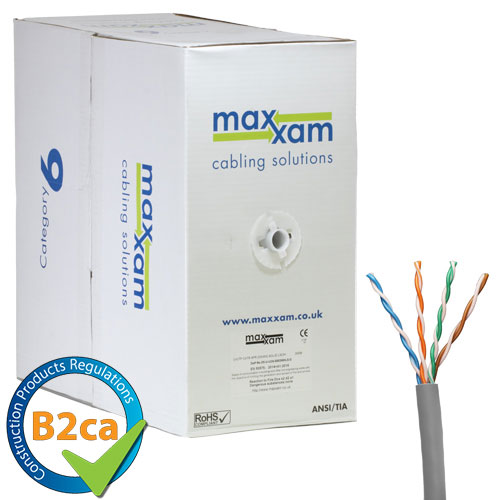
XX60004GY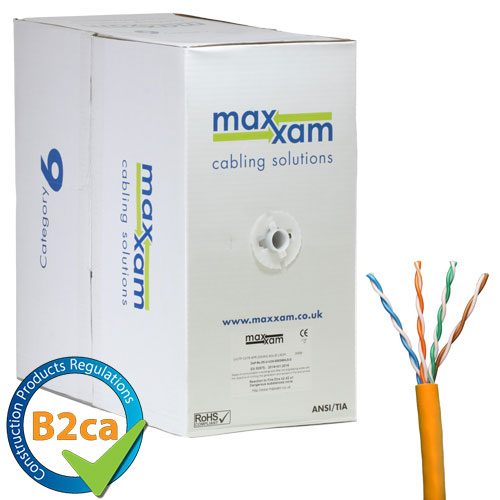
XX60004O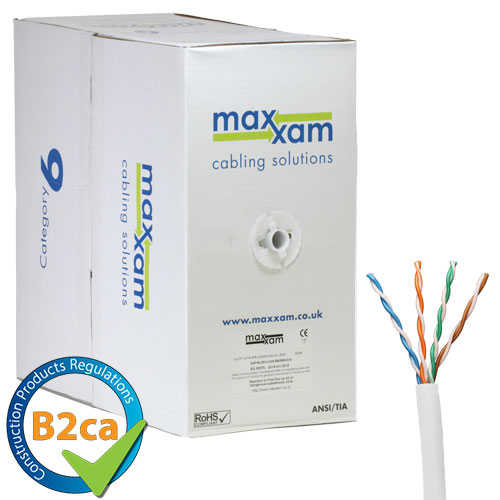
XX60004WH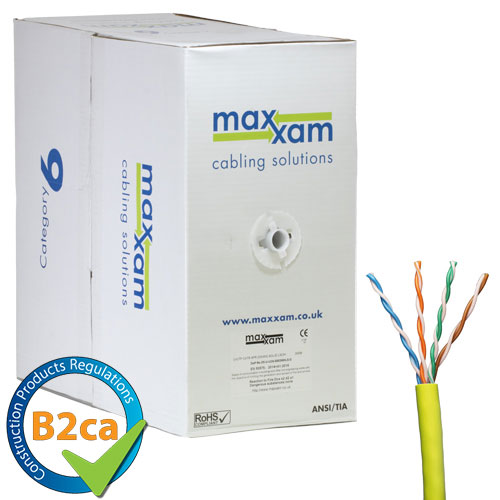
XX60004YCca Cable 
XX5E0001CDca Cable 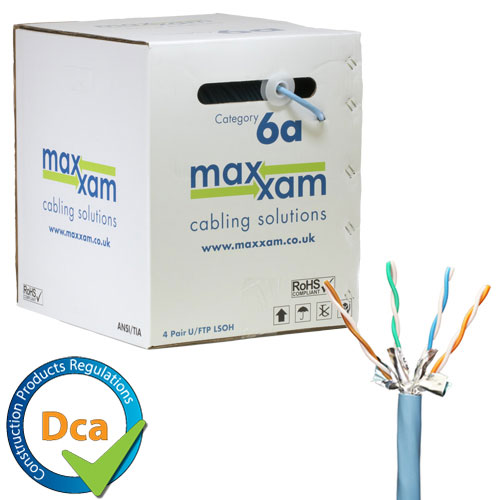
XX6A0001Z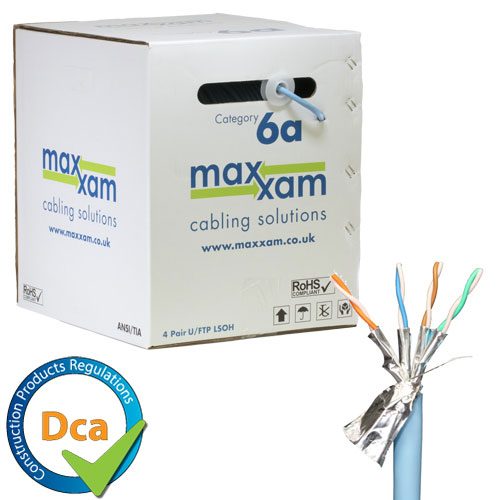
XX6A0005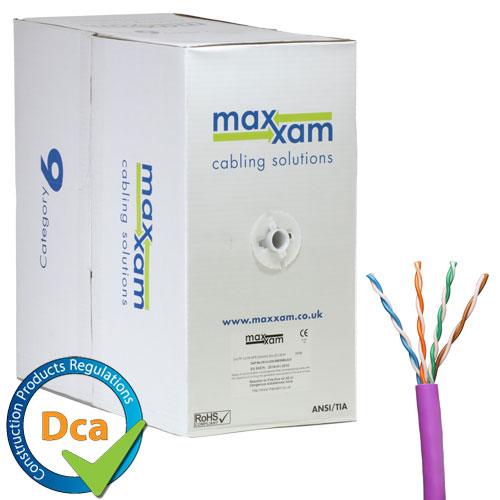
XX60003
XX60003B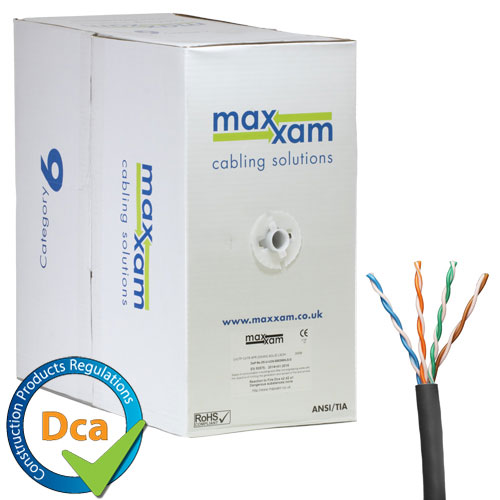
XX60003BK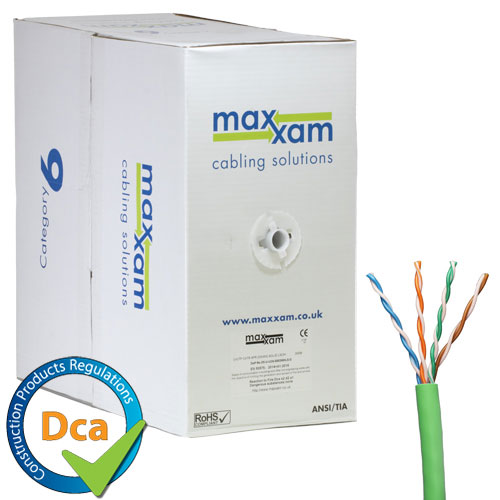
XX60003G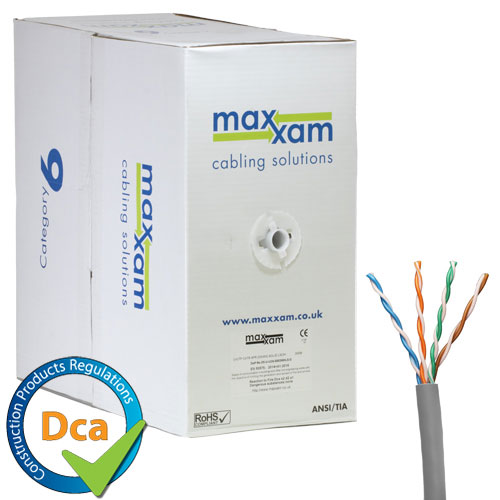
XX60003GY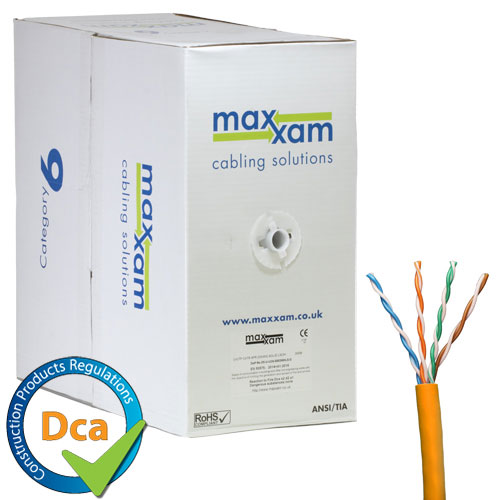
XX60003O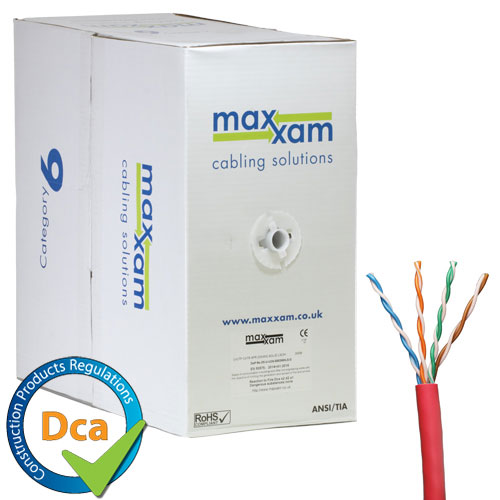
XX60003R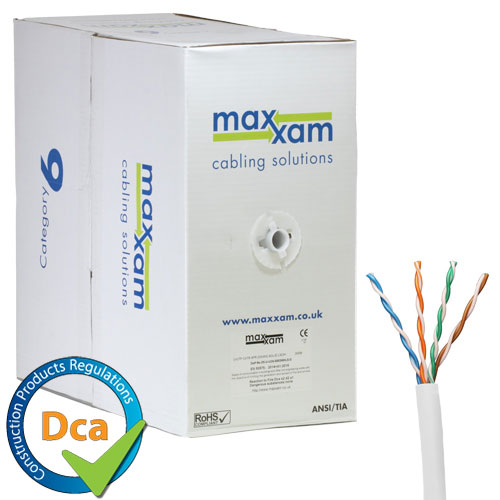
XX60003WH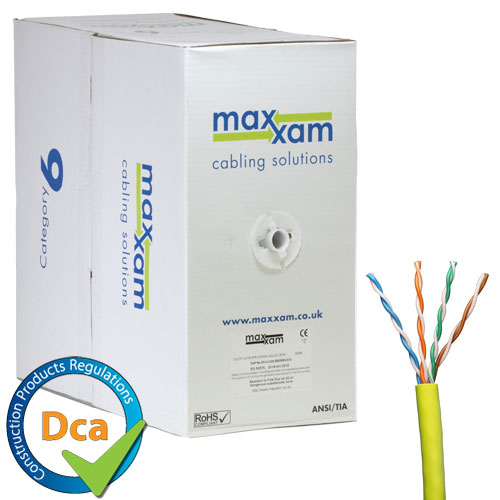
XX60009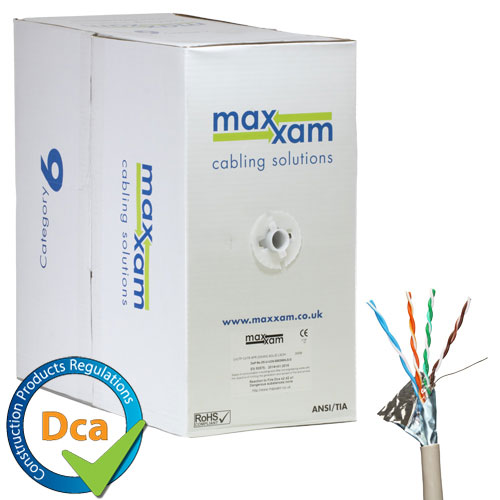
XX60009
XX5E0001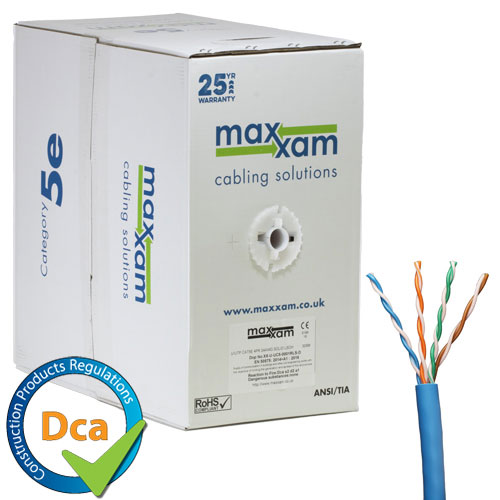
XX5E0001B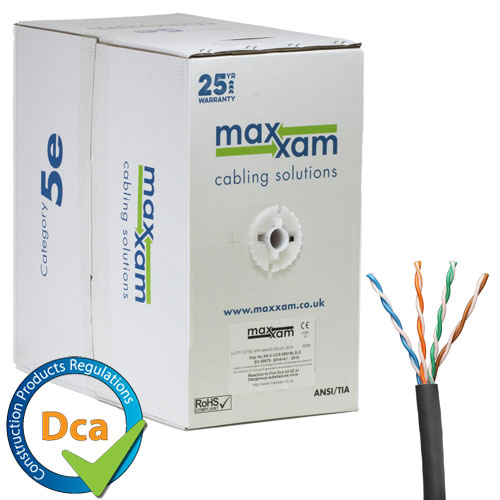
XX5E0001BK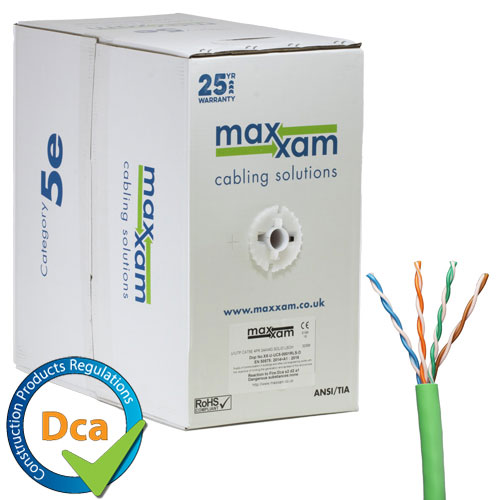
XX5E0001G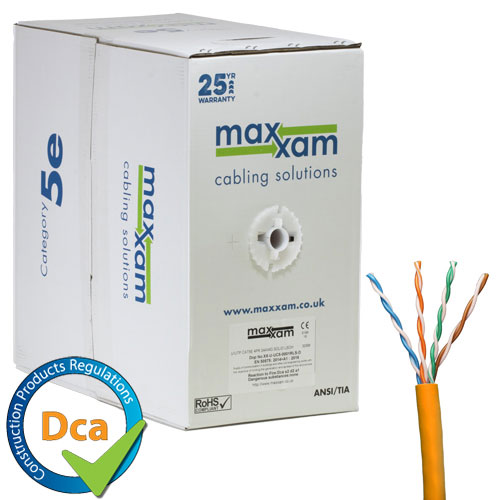
XX5E0001O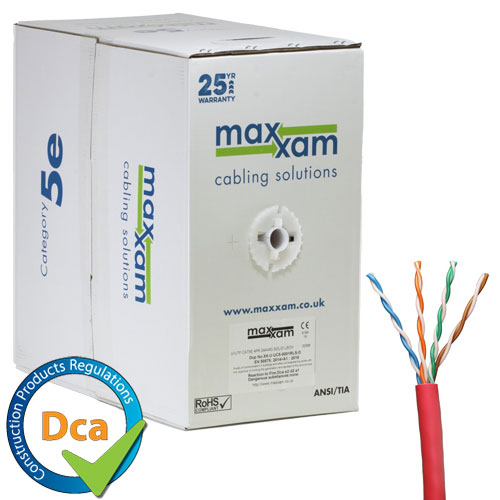
XX5E0001R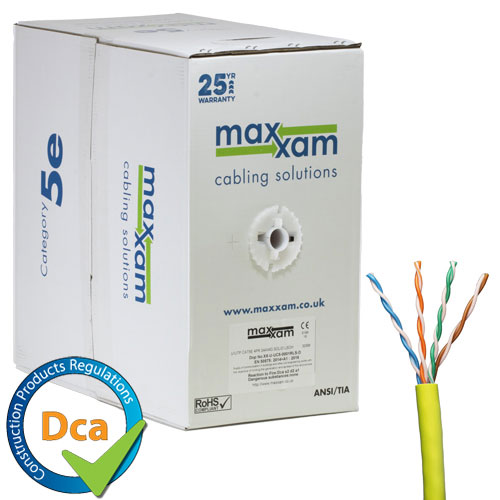
XX5E0001Y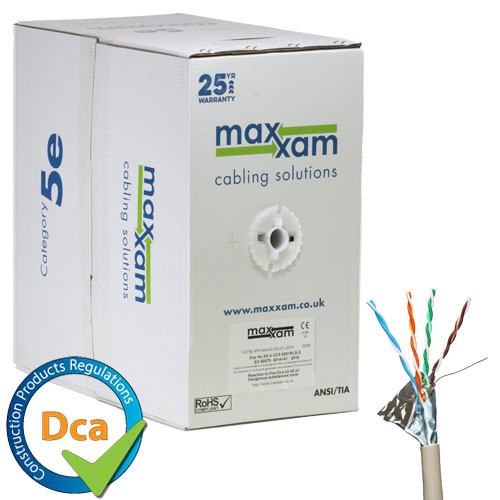
XX5E0009
User Guide for Online Account
User Guide for Online Account
Your website account is linked directly to your account on our integrated business software, which has several beneficial features to you as a customer.
Read more...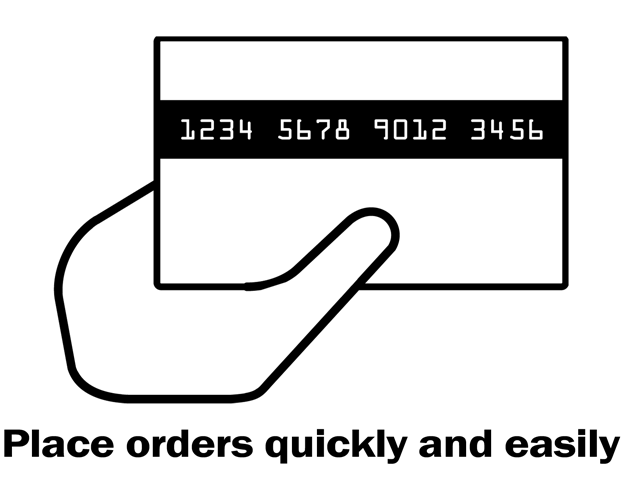
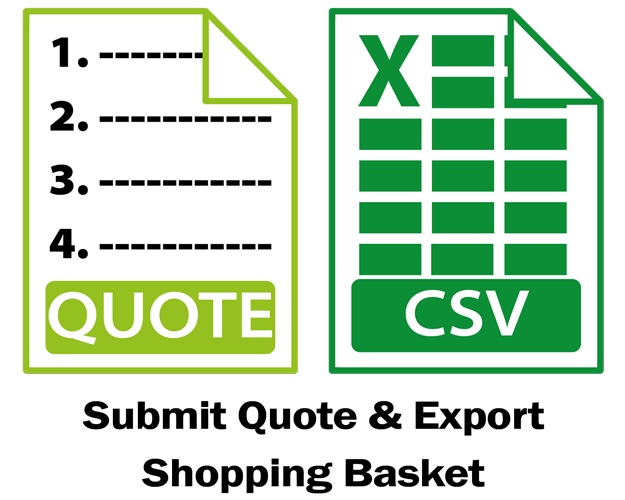


Once you have navigated the website and added items to your shopping basket, click the ‘View Shopping Basket’ button.
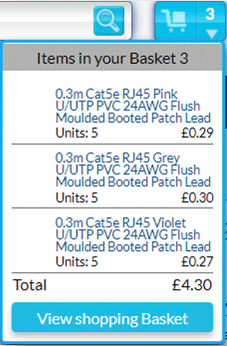
You will then be presented with a screen like the one below.
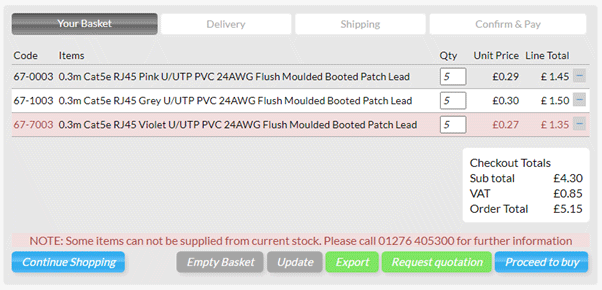
If you have selected any items with zero stock these will be highlighted in red for you, as per the example above.
You then have several options available to you.
• Continue shopping: This retains the contents of your basket and takes you back to the homepage for you to carry on browsing the website.
• Empty Basket: If you have made a mistake with your entire order and need to start again.
• Update: You can use the QTY boxes to change the number of items on each line.
• Export: This exports the contents of your shopping basket as a CSV file and typically stores it in the ‘Downloads’ folder on your computer.
• Request quotation: This submits the contents of your shopping basket to your account on our integrated business software for processing by your account manager. You will also receive a Web Quote Confirmation to the email address stored against your account for your records.
• Proceed to buy: This continues with the normal ordering process. Make sure you enter the correct shipping address or collection if required, shipping method and any delivery instruction. Once completed you will receive a Web Order Confirmation of your order to the email address stored against your account for your records.Account History – Purchasing & Quotes
The Order History tab will show all your orders & quotes in chronological order.
You can enter criteria in the search box, reference number, product codes, text from the product description, this will filter your results and you can then easily add them to your basket for repeat purchases.
EZ Easy Plugs - RJ45 Cat5e & Cat6
EZ Easy Plugs - RJ45 Cat5e & Cat6
Read more...Time-saving and efficient assembly with the latest additions to our range of RJ45 plugs.
Easy as 1... 2... 3...
1 - Prepare the cable - Remove the cable jacket, arrange the 4 pairs
2 - Assemble the plug to wiremap 568A or 568B
3 - Crimp, trim and snap the strain relief boot in place
The links below will take you to each product in this range
EZ Easy Plug RJ45
Cat5e - RJ45 UTP EZ Easy Plug
Cat5e - RJ45 FTP EZ Easy Plug
Cat6 - RJ45 UTP EZ Easy Plug
Cat6 - RJ45 FTP EZ Easy Plug
EZ Easy Plug Accessories
EZ Easy Plug Crimping Tool
EZ Easy Plug Cable Stripper
EZ Easy Plug Plastic Carry Case
Cat6a RJ45 FTP Field Termination Plug
Cat6a RJ45 FTP Field Termination Plug.
Read more...The Cablenet Cat6a RJ45 Field Termination Plugs allow time-saving and efficient assembly on-site.
These field termination plugs are manufactured with a fully shielded die-cast zinc alloy, nickel-plated body and gold-plated phosphor bronze contact pins.
Suitable for cable diameters between 6.00mm and 7.5mm, cable retention and strain relief are provided by the compression nut on the rear of the connector.
Angled IDC termination accepts wire gauges from 23 to 26AWG and they are suitable for stranded or solid wire.Available with a White, Black or Blue latch to aid network identification and termination is toolless or aided with the dedicated Crimping Tool for Cat6a Field Termination Plug.
CABLENET 2020 PRODUCT GUIDE
* NOW AVAILABLE *
CABLENET 2020 PRODUCT GUIDERead more...Packed with thousands of products
Tabulated pages allow you to quickly find the section you want
NEW 'TECH TERMS' pages provide useful technology information
View the Cablenet 2020 Product Guide HERE
Cablenet Announcement - ConnectorCo
Cablenet Announcement - ConnectorCo
 Read more...
Read more...I am pleased to announce that on the 1st November, Cablenet merged its ConnectorCo AV & Security products subsidiary into an enlarged Cablenet product portfolio, which can now be found in the new AV & Security section on the Cablenet website.
The ConnectorCo sales team is now working within the enlarged Cablenet sales team, packed with experience and know-how on all these great AV and Security products.
The AV & Security markets are converging into the IP world, and for most of our customers, these products should be a natural extension of their business. We look forward to helping our customers take advantage of these market opportunities combining these new ranges with the existing Cablenet products.
Yours Sincerely,
Peter Pearson
Managing Director
DisplayPort 1.4 & 1.2 - What's the difference?
DisplayPort 1.4 & 1.2 - What's the difference?
 Read more...
Read more...DisplayPort cables have offered broad and impressive bandwidth for data transmission since their first iteration, which is only improved in successive generations. When it comes to DisplayPort 1.4 vs 1.2, the newer standard is more capable, but DisplayPort 1.2 is still impressive.
DisplayPort 1.2 offers a maximum total bandwidth of 21.6 Gbps over its four lanes and a maximum total data rate of 17.28 Gbps. In comparison, DisplayPort 1.4 has the same four-lane structure but expands the maximum total bandwidth to 32.40 Gbps, and the maximum total data rate to 25.92 Gbps.
DisplayPort 1.4 however, takes things a much greater step further. It supports 1440p resolution up to 240Hz and even 4K at up to 120Hz. It also supports 5K resolution at up to 60Hz, and even 8K resolution at 30Hz.
DisplayPort 1.4 has a maximum total bandwidth of 32.4Gbps and a maximum total data rate of 25.92 Gbps. This gives it enough bandwidth to handle a 4K UHD stream at up to 120Hz with 24-bit/px colour, or a 5K display at up to 60Hz, with 30-bit/px colour. It even supports 8K video, but only at up to 30Hz due to the hefty bandwidth demands.
Another important feature of DisplayPort 1.4 is the introduction of Display Stream Compression 1.2 support (DSC). As a visually lossless encoding technique, DSC is a fantastic way to get more for your cabling, and with DisplayPort 1.4 coupled to a DSC supported display, you can support 4K at up to 120Hz with 30-bit/px colour and HDR-enabled, or 8K at up to 60Hz.
Additional benefits include support for Dual-mode for DVI and HDMI, making it possible to connect a DisplayPort 1.4 device to an HDMI 2.0 source, or vice versa. It also includes better support for HDR10 metadata and forward error correction for a noiseless transmission.
Another major improvement with DisplayPort 1.4 was on the audio front, where it moved from a maximum audio sample rate of 768kHz to 1,536kHz. It also increased the maximum number of audio channels from 8 to 32.
DisplayPort 1.4 cables are entirely backwards compatible with older DisplayPort devices, whether using a full size or Mini DisplayPort connection.
Network Cabling Problems caused by CCA and why you should avoid CCA.
Network Cabling Problems caused by CCA and why you should avoid CCA.
READ THE FULL ARTICLE BELOW OR CLICK HERE TO DOWNLOAD THE PDF
Read more...When network infrastructure budgets are tight, it can be tempting to cut corners where you can. One example of attempted cost savings is through Copper Clad Aluminum (CCA) cabling systems. Offered as a cost-effective replacement for Pure Copper Cable, CCA cable is anything but an effective solution. While CCA products might look like (and be advertised to function like) standard Category 5e, Category 6 or 6a cabling, there are significant differences that could pose network problems, concerns about business continuity and safety hazards and these negative commercial implications will cost much more than the original savings gained.
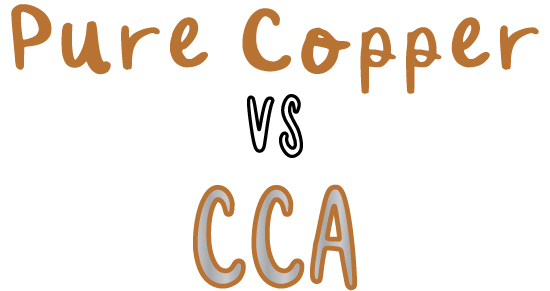
Unfortunately, there is not one web site we can point you to anywhere in the world from a standards viewpoint that will reference the use of CCA cables as Ethernet or Network cables. The Ethernet Network Standard IEEE802.3-2018 is written around the use of TIA/ISO Category or Class cable standards based on cables manufactured using Pure Copper Cable.
There are a variety of different cables available for Ethernet Networking applications. These network cables that are described by their various categories, e.g., Cat 5 cables, Cat 6 cables, etc. which are recognized by the International regulators including ISO and the TIA (Telecommunications Industries Association). These industry and regulatory bodies only approve and reference Pure Copper.
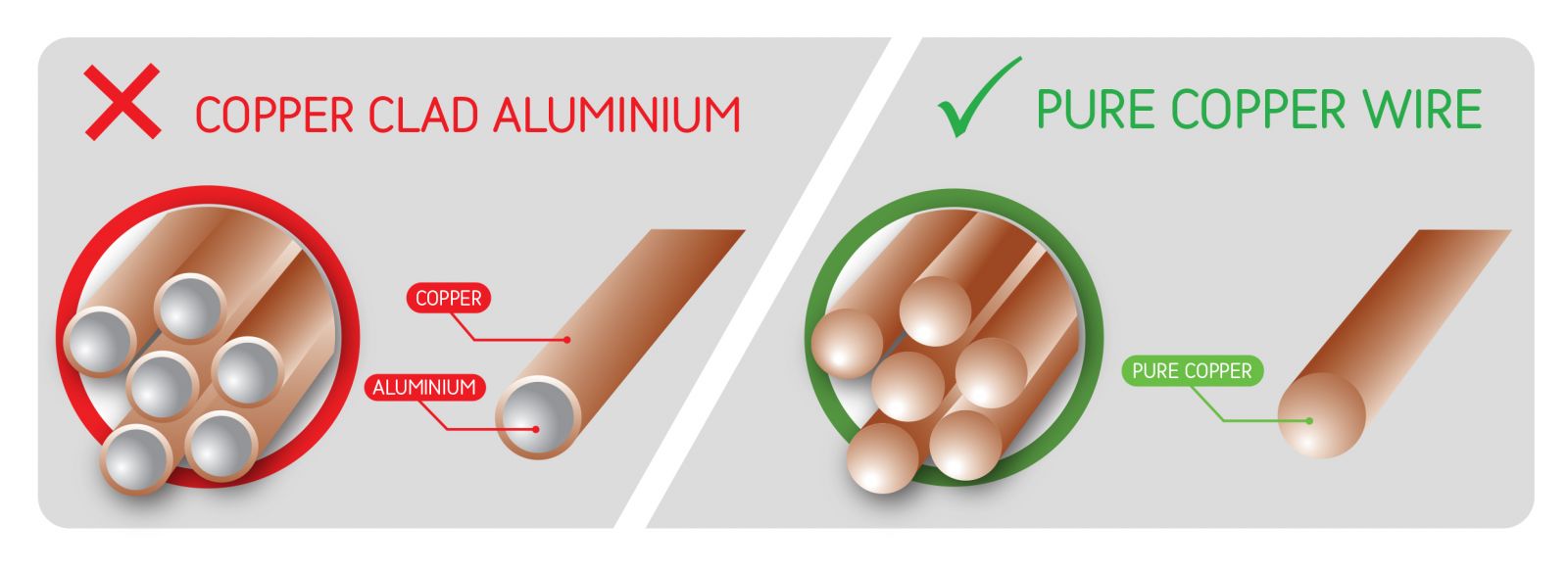
Several significant issues can arise when using CCA cabling systems as part of your network infrastructure.
Here, we outline a few of them for you.
UKCA CE Conformity: Even for Ethernet cable, many people think Ethernet somehow is not electrical in nature, either ultra-low voltage without PoE and low voltage when running PoE over it. All Category cables, whether they are 5e, 6 or 6a should be in packaging that carries the CE Mark as they comply to the with the Low Voltage Directive (LVD) and it is an obligation on the supplier to maintain a ‘Technical File’ of specification and test information for the product. When a product such as CCA cable is introduced to the market it cannot comply with this directive, and it does not comply with any standards, then the burden on the person placing the product on the market, or selling the product becomes more onerous to justify the conformity of their product to the essential safety requirements of the LVD.
Not approved to International Cabling Standards compliance: CCA twisted pair cables do not comply with either the US, UL, and TIA standards, European and International EN or ISO standards, which all call for Pure copper conductors.
Not Approved to International Applications Standards: CCA cable is not approved for use by IEEE802 Ethernet Standards due to poor data and PoE transmission characteristics and it can carry Ethernet data signals over distance (called attenuation). Attenuation is a fancy word for degradation in quality and used in this context, the signal’s quality.
Installation issues with poor flexibility and bend radius: CCA cable is brittle and can easily break. It has been reported that even moving a patch cable in a patch panel or a faceplate can cause failures. It is important to note that the bend radius of CCA cabling is limited and is not tolerant of bends.
Conductors can break during termination: Due to low tensile strength, this reduced strength of the CCA conductor typically leads to poor retention of the wire within the Insulation Displacement Connector (IDC). IDC’s are used throughout the Network Industry and are designed for copper. Some CCA cables will snap off immediately or later fail, but always consequently offer poor termination reliability.
Oxidation and corrosion: CCA cables are very reactive. Aluminium oxidises when exposed to air and will cause low and high-frequency problems which may cause failed terminations in the network infrastructure, leading to connectivity problems. Network engineers can spend lots of time locating and addressing these failures.
PoE: The Power over Ethernet market share will be well of over 40% by 2025. PoE technology enables the centralisation of power in one location. It provides high-speed connectivity to support the growing number of wireless devices in business, whilst eliminating the need to deploy separate power supplies. Powering this is also the development of standards to fuel the adoption of PoE solutions with gigabit connectivity, all designed to run on Pure Copper Network cables.
Not suitable for PoE applications and beware of cables overheating: PoE Category cables can now carry up to 90 Watts for IP phones, wireless access points and cameras. CCA cable is not suitable for PoE due to the higher resistance which can cause radiant heat to build up faster. In larger installations where many CCA cables are bundled together, the temperature rises generated and the increased resistance will compromise the supported cable length and potentially start a fire or damage a PoE device on the other end due to the inability to supply enough current. The higher DC resistance of CCA cable compared to Pure Copper introduces voltage drop, limiting the voltage available to the device which can also damage the device.
Finally, the applications perspective: Category cables, whether they are Category 5e, 6 or 6a, are built to standards which have been used since 1980, as the basis for transmission speeds that the IP world and Internet use through the IEEE Ethernet specifications. The original 802.3 Ethernet wire speeds started out at 100 MBps transfer rates, whilst we now have Gigabit Ethernet as a standard Network speed and support up to 40Gigabit Ethernet applications. This growth in Network speed to support the Internet, together with growth in the use of other applications such as IP video, IP Phones, IoT, Wireless Wifi6 & 5G and Power over Ethernet (PoE) places even greater demands on these copper cables. Perhaps the ever-increasing use of PoE equipment, within Ethernet networks, is the final application “killer” for CCA, as it just simply does not work with PoE equipment.
References
https://standards.ieee.org/standard/802_3-2018.html
https://www.iso.org/standard/72668.html
Your New Tech Terms Guide - Download Your Copy Today.
Your New Tech Terms Guide - Download Your Copy Today.
Read more...Our New Tech Terms Guide has been enhanced to support all the products we sell and feature in our Product Guide. We offer over 6000 premium quality, affordable products for all your Computer & Network cabling needs.
If you have any technical questions on anything in this Tech Terms Guide, please contact your personal account manager.
We strive to continue to offer the very best customer service and retain your repeat business year after year and hope you find this Guide useful.
Copper Clad Aluminium (CCA) - know what you're buying.
Copper Clad Aluminium (CCA) - know what you're buying.
Are you buying substandard patch cords? Do you know if they are pure copper or Copper Clad Aluminium?
Read more...If you buy the cheapest patch cords you are offered there is a good chance they are not fit for purpose and could pose a serious risk to business continuity and safety.
What is Copper Clad Aluminium wire?
CCA wire uses an aluminium conductor that is coated with copper, this process presents at face value a production technique that uses less of an expensive material, of which there is a global shortage, bringing commercial benefits to any potential suppliers of CCA network cable over competitors who supply pure copper equivalents.
But what about the organizations who will rely on the cables as a vital part of their network infrastructure?
This is where the CCA proposition starts to look less appealing:
The use of CCA wire in twisted pair network cable is not permitted by the IEC or CENELEC in their cable standards and the lack of any kind of standardization with relation to the ratios of copper and aluminium means that any testing by the industry can only be relevant to the actual piece of cable being analysed. 3P; an organization that provides third-party testing for compliance with industry standards for cable manufacturers strongly advises against the use of CCA wire in twisted pair network cable. The use of CCA wire directly contravenes both CAT5e and CAT6 specifications which denote the use of copper conductors. CCA wire is not a copper conductor. Organizations supplying CCA as CAT5e and CAT6 network cables should examine very carefully if they are in compliance with the sales of goods act.
CCA has higher attenuation properties than pure copper cable, this will result in more packets of data having to be retransmitted when it is corrupted or lost at the physical layer. This effect is particularly prevalent on longer cable channels on or near the 100mtr maximum and will at best lead to a slower network for most users of CCA twisted pair cable.
CCA has further negative implications when used for Power over Ethernet (PoE) applications. When Power is applied to CCA cables the cable will overheat, and quite quickly. For a given applied current, initial temperature increases can be twice those seen on a solid copper conductor. When the cable does start to overheat a vicious spiral begins and unless the current is switched off there is no going back to a point of safe working. This could cause extensive damage to the cable and adjacent cables. If cords contain stranded CCA conductors, the impact on heating is further emphasised. The implications of this are particularly frighteningly in applications such as IP CCTV where power is continuously drawn through network cables 24 hours a day, 7 days a week, 365 days of the year using a cable with higher attenuation properties than intended for use with the IEEE802.3af standard, let alone IEEE802.3at, makes very real the possibility that heat will build up faster than it can be dissipated with potentially disastrous consequences.
In addition to less desirable electrical qualities, CCA wire presents a number of physical problems for installers ultimately leading to delay and additional expense. CCA wire has a lower tensile strength than pure copper and as such the cable can be damaged through pulling, with conductors or the whole cable breaking. CCA wire in twisted pair applications also has less tolerance for bend radius; for a cable installer who doesn’t know he is working with CCA cable, vast amounts of time can be wasted finding the source of a test failure.
A few UK importers and distributors are still supplying CCA patch cables to their customers despite its substandard performance in the field is well documented.
In terms of the issue of liability for any problems that may arise from the use of CCA, however minor or severe; the buck stops with the importer/distributor, who in reality should know the implications of using CCA wire in today’s network applications. In this instance, given the very obvious shortcomings of CCA wire in twisted pair networking applications; the standard of cable a distributor supply is a good measure of their technical competence and long-term interest in their customer’s business.
The Cablenet Promise
At Cablenet our commitment to ensuring the supply of quality products to our customer means that we have absolutely no interest in exploring the avenue of CCW patch leads and/or any other type of non-copper conductive cabling. We would never knowingly supply our customers with CCA regardless of the instability of the global copper market at this present time.
Cablenet will not supply Copper Clad Aluminium wire network cable to any of its customers. Our message to the industry is to ask your cable supplier what they are offering you, and then make an informed choice.
Get Authentic Cat5e, Cat6, and Cat6a Patch Cables here.

 Show Main Categories
Show Main Categories